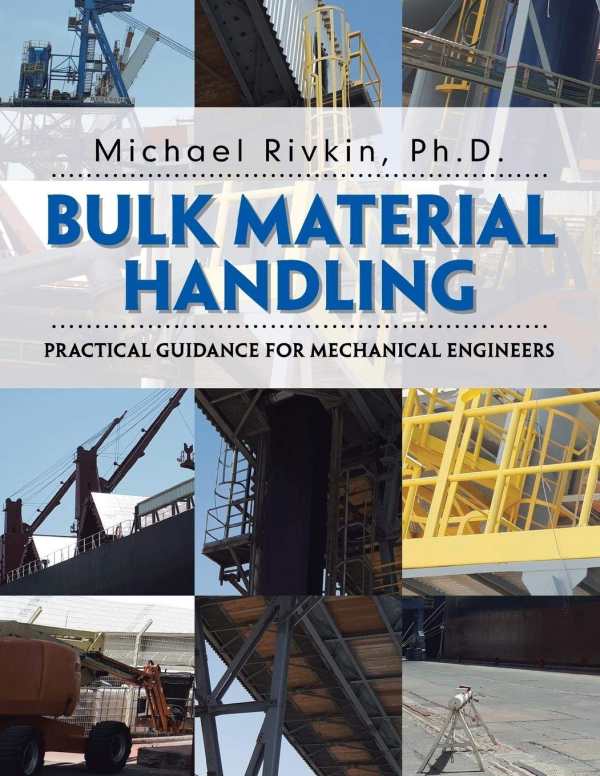Bulk Material Handling
Practical Guidance for Mechanical Engineers
A thorough text for logistics professionals, Bulk Material Handling has the answers they’re seeking.
Michael Rivkin’s encyclopedic Bulk Material Handling will serve mechanical engineers who are puzzling through how to best move heaps of ore, sand, or other dry materials from point A to point B.
Written in the style of a college textbook, the text breaks down the ideal ways for transporting bulk solids like concrete and road salt, whether by ship, truck, or conveyor belt. It is knowledgeable and thorough as it covers practical matters like loading, discharging, and storing the type of granular, powdery, or lumpy goods that are sold by the ton.
Details on how bulk materials go from vessels to customers are informative and include tips for professionals on how to best use cranes, conveyors, and other equipment to maximize efficiency and wring the most possible use out of capacity. Exhaustive in detail and objective in tone, the book enumerates multiple advantages and disadvantages to each approach. It analyzes profitability and productivity under different sets of circumstances.
Common problems like leaks, dust, and steep capital investment are addressed with authority, laying out options and recommendations instead of issuing blanket injunctions. Cost-benefit analyses are more prescriptive. Keen on specifics, the text even recommends the proper thickness of conveyor belts down to the millimeter. It dwells longer than necessary on some topics, like the Cleveland Cascade chute.
The book’s organization is efficient. Chapters cover different kinds of bulk handling and are further divided into sections dedicated to different methods, making the book handy as a reference. Bullet point lists make dense servings of information more digestible. A comprehensive table of contents makes it easy to skip to relevant sections.
Photos, tables, and diagrams are provided to illustrate the particulars of bulk material handling. They are clear and comprehensible. Complex equations illustrate salient points as well. Even with all the technical expertise on display, the book remains digestible for the layperson. Language is lucid and unadorned.
The book’s methodical rigor means that its river of information is constant; there’s no stylistic flair to make it less dry, read cover to cover. The research behind it is evident, though, and it is replete with useful facts that are individually ably clarified. Its outlining of optimal solutions for moving bulk goods from mines, quarries, chemical plants, and ports across seas and rivers is handy.
Bulk Material Handling is a useful text for logistics professionals. It explores technical challenges well.
Reviewed by
Joseph S. Pete
Disclosure: This article is not an endorsement, but a review. The publisher of this book provided free copies of the book and paid a small fee to have their book reviewed by a professional reviewer. Foreword Reviews and Clarion Reviews make no guarantee that the publisher will receive a positive review. Foreword Magazine, Inc. is disclosing this in accordance with the Federal Trade Commission’s 16 CFR, Part 255.

